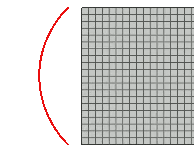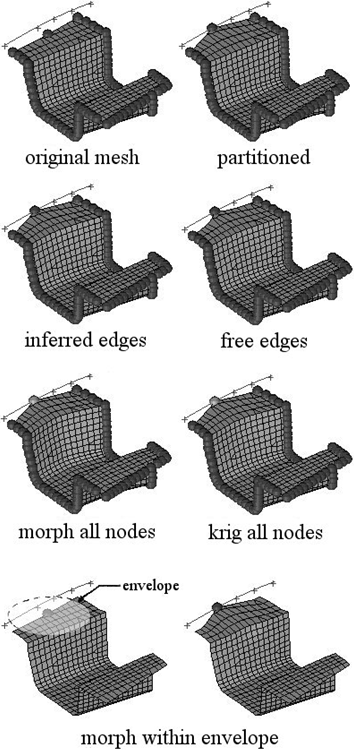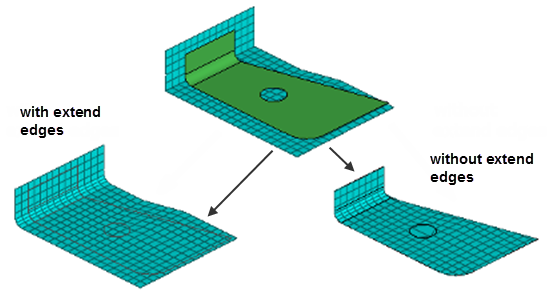Free Morph Mesh
Use the Free Morph tool to morph mesh by moving nodes, faces, and edges or by mapping to geometry.

Free Morph Tool
An overview of the Free Morph tool.

Use the Free Morph tool to morph mesh by moving nodes, faces, and edges or by mapping to geometry.
- Access
- Go to .
Guide Bar Options
- Automatic
- Automatically select anchor nodes and morph area elements.
- Remorph changes
- Re-applies previous morph with new options and entities.
- Automatic anchors
- Enables automatic selection of anchor nodes.
- Calculate by
- Select fixed nodes.
- Value
- Set distance or multiplier.
- Morph method
- Select method to morph mesh.
- Undisplayed nodes
- Select option for undisplayed nodes.
- Moving nodes
- Set bias for moving nodes.
- Anchors
- Set bias for anchors.
- Translate increment
- Enables discrete movement of manipulator in translation.
- Rotate increment
- Enables discrete movement of manipulator in rotation.
- Step size
- Increment for translating/rotating multiplier
- Real time
- Morph mesh while moving manipulator.
- Active
- Allow manipulator to morph mesh.
Mapping Options
Use the following microdialog options when selecting target geometry.
 - Use
manipulator
- Use
manipulator- Move entities interactively with the Move tool.
 - Projection
direction
- Projection
direction-
- Along vector
- Project along a user-defined direction using the Vector tool. After a direction is defined, press ESC to close the tool.
- Normal to target
- Project normal to target.
- Normal to source
- Project normal to nodes' mesh.
- Smoothed normals
- Calculate the average normal direction for all elements and then smooth them so that transitions near corners are not abrupt.
- CFD normals
- Use a sophisticated algorithm to smooth the normals for all the elements such that the elements will not get folded when their nodes are morphed.
- Fit to line
- Fit along line through target.
 - Toggle extended
surface edges
- Toggle extended
surface edges- Extend the edges of the surfaces or mesh in a direction perpendicular to the normal at the closest point on the surfaces or mesh. If this option is selected, the moving nodes will be projected on to an extended representation of the surfaces or mesh, enabling you to project nodes beyond the edge of the surfaces or mesh as well as within any holes. If this option is not selected, the moving nodes will be projected on to the interior or edges of the surfaces or mesh, which may end up distorting the morphed mesh.
 - Offset
- Offset- Apply an offset value to be maintained between the moving nodes and the
selected targets. This value represents an absolute distance, regardless of
the direction in which the nodes are moved.
A positive value for the offset will place the nodes short of the target, a negative value for the offset will place the nodes beyond the target, and an offset of zero will place the nodes on the target.
When mapping to target elements, the direction of the offset will be calculated using the element normals.
 - Offset in all
directions
- Offset in all
directions- Measure the offset from each node to the closest point on the target,
regardless of projection direction.
When turned off, the offset is measured along the direction of projection of each node.
 - Autofix target normals
- Autofix target normals- When mapping to target elements, this option will ensure all mapped nodes remain on the same side of the target mesh by automatically adjusting any flipped normals in the target mesh.
Keyboard Shortcuts and Mouse Controls
| To do this | Press |
|---|---|
| Undo morphing | Ctrl + Z |
| Undo all morphing operations | Ctrl + Shift + Z |
| Redo morphing | Ctrl + Y |
| Redo all morphing operations | Ctrl + Shift + Y |
 to define morphing options.
to define morphing options.
